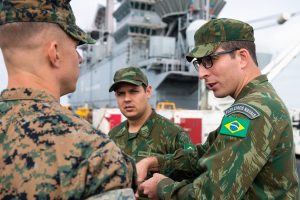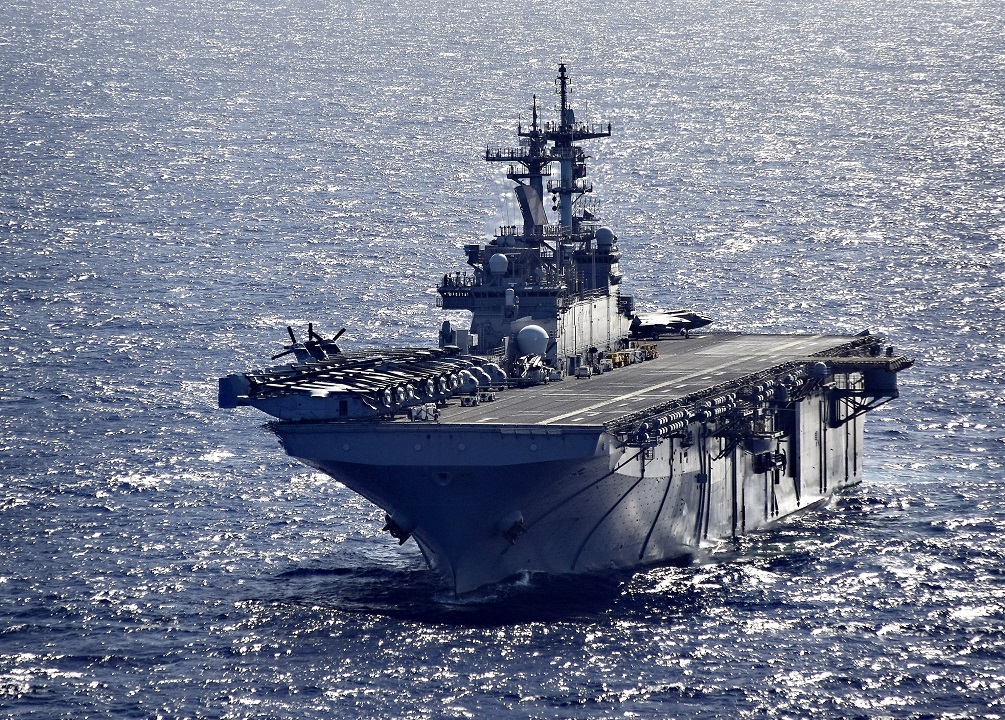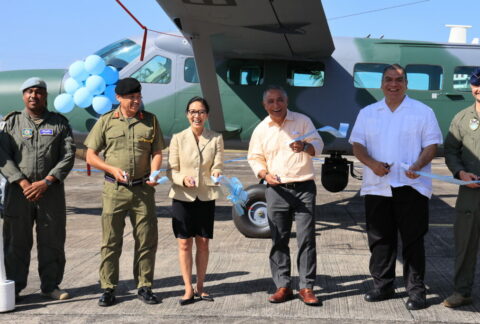Twenty multinational naval officers assigned to the Combined Task Force (CTF) aboard the amphibious assault ship USS Wasp participated in the first-ever U.S. Naval War College-hosted classroom education course on humanitarian and disaster relief (HADR) planning held October 13–November 5.
The maritime CTF included representatives from Argentina, Brazil, Chile, Colombia, El Salvador, Peru, and the United States. The course comprised three phases of training designed to create a shared standard operating procedure (SOP) to support foreign humanitarian assistance.
“Interoperability has been established over the years and we will reinforce it though shared operating procedures, understanding of the operating environment, and our respective military’s response in a humanitarian assistance and disaster relief scenario,” said U.S. Navy Captain Steven Stacy, who coordinated and facilitated the training. “We are conducting these missions with our partners now and hope that the Combined Task Force will eventually establish a permanent organization which will help us more rapidly and effectively conduct multinational operations within the U.S. Southern Command area of responsibility.”
Participants embarked Wasp during its port visit to Valparaiso, Chile. This engagement is part of Wasp’s transit around South America as her homeport shifts from Sasebo, Japan, to Norfolk, Virginia. after serving nearly two years in the U.S. 7th Fleet area of operations.
The first phase of the training covered foreign disaster relief planning with members of the U.S. Naval War College while in Valparaiso.

After departing Valparaiso, the CTF transitioned to its second phase, a tabletop exercise on planning a combined response to a hypothetical disaster caused by a hurricane in Honduras. Each CTF member was responsible for analyzing a case study of a previous humanitarian response.
“Each partner nation and U.S. representatives have presented the military and civilian response capability and mechanisms for their respective countries,” said Major Diego Miranda, CTF Intelligence Officer assigned to Marine Corps Forces, South. “This understanding and valuable information has further improved the interoperability and value of the CTF’s training and will lead to a comprehensive shared operating procedure going forward.”
During the final portion of the course students planned and executed a mock HADR scenario, demonstrating their knowledge and understanding of their interoperability potential. They will develop a draft HADR SOP that can serve as a model for a multinational response to a disaster for the future.
“Understanding what is expected of you and what you expect of others in a crisis can mean saving lives and preventing suffering,” said professor Tony Fox, Naval War College deputy director of the Civilian-Military Humanitarian Response Program.
“The bottom line is that we and our multinational partners intend to provide not only education but also documentation that will allow us to conduct a more rapid and efficient response to humanitarian assistance and crisis response when minutes count.”
The multinational training has also been beneficial to the U.S. Navy’s overarching mission. “This transit allows the U.S. Navy to strengthen partnership with several of our strategic partners in the region, provides for increased interoperability and improved regional and component readiness,” said Capt. Stacy. “[It also] serves as the initial step for U.S. Naval Forces Southern Command and 4th Fleet to take toward establishment of a multinational Combined Task Force.”
The transit emphasized the missions of the CTF. “All the nations involved share a respect for human rights and the desire for strong military-to-military relationships,” said Maj. Miranda. “These relationships are key to reducing threats and enhancing collective readiness and capabilities necessary to meet today’s global challenges. The shared awareness gained by the CTF’s mission aboard Wasp will go a long way to meeting these objectives.”
The U.S. Naval War College has been educating and developing leaders from all branches of services, U.S. government agencies and departments, and international militaries since its establishment in 1884.









